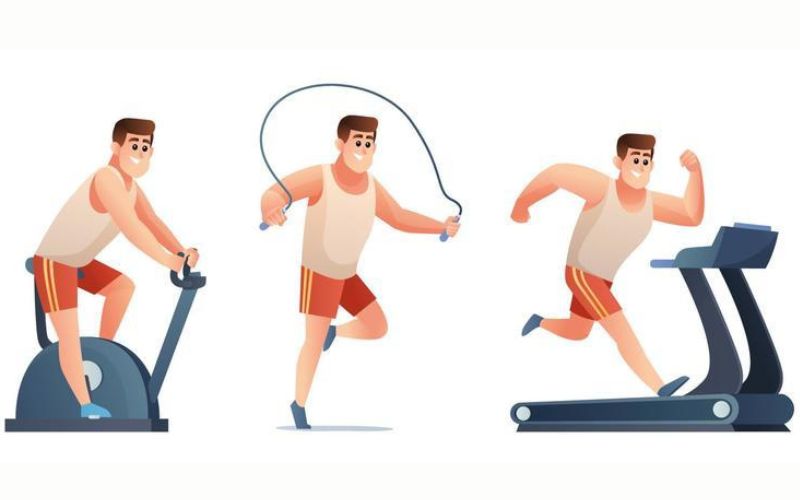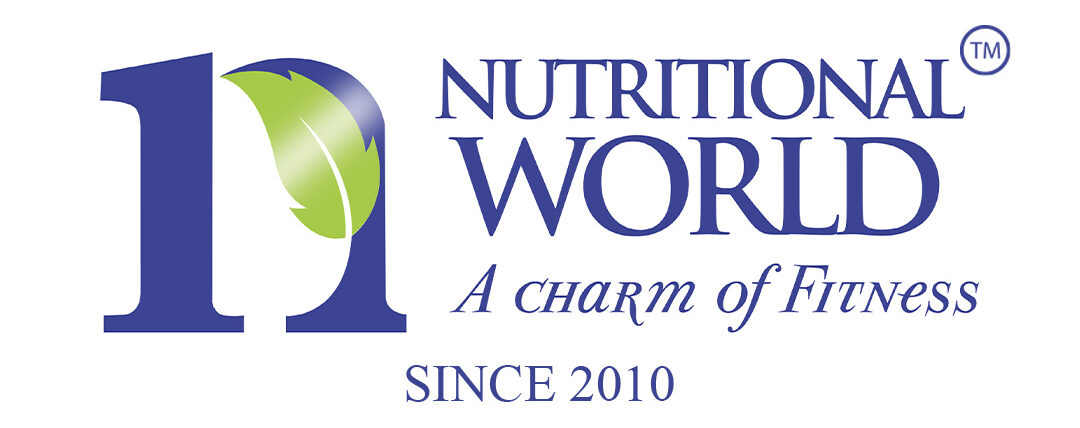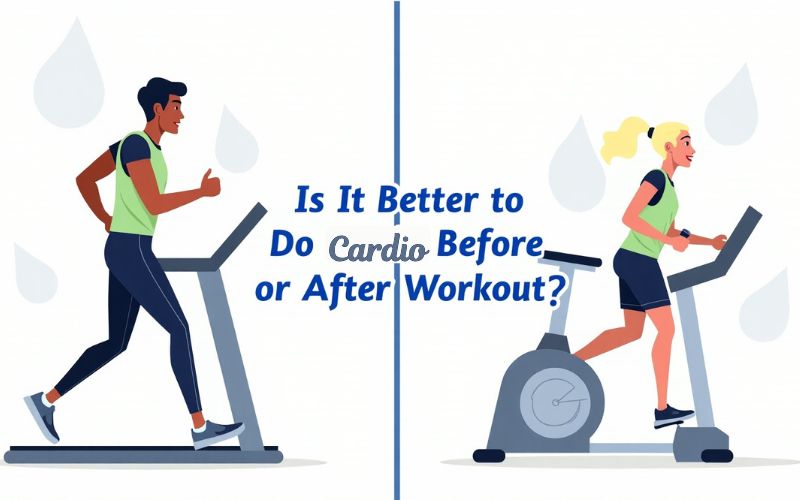When it comes to structuring a fitness routine, one of the most commonly asked questions is: is it better to do cardio before or after workout? The answer isn’t as simple as one-size-fits-all. It depends on your goals, fitness level, and the type of cardio and strength training you’re doing.
Let’s break down the science, expert opinions, and real-life results to help you decide what’s best for your body and goals.
Table of Contents
Understanding Cardio and Strength Training
Before answering is it better to do cardio before or after workout, it’s important to understand what each type of exercise does for your body.
- Cardio (aerobic exercise) includes running, cycling, swimming, or any activity that increases your heart rate and burns calories. It’s excellent for improving endurance, heart health, and fat loss.
- Strength training (resistance training) involves lifting weights or using resistance bands to build muscle, improve bone density, and increase metabolism.
Both are essential for a balanced fitness routine. But their order can impact how your body responds to exercise.
Cardio Before Workout: Pros and Cons
Doing cardio first can be beneficial, especially if your primary goal is improving cardiovascular health or endurance.
Benefits of Doing Cardio First

- Warms up the body: A moderate cardio session can prepare your muscles and joints for resistance training.
- Enhances stamina: If you’re training for a race or sport, doing cardio first mimics the demands of endurance events.
- Burns glycogen stores: Starting with cardio can use up stored carbohydrates, making your body turn to fat for energy during strength training (if done correctly).
Drawbacks
- Reduced strength performance: You might feel fatigued by the time you get to weightlifting, affecting your form and reducing strength gains.
- Increased risk of injury: If you’re tired from cardio, lifting heavy weights afterward may increase the risk of improper technique.
Cardio After Workout: Pros and Cons
Most fitness professionals recommend doing cardio after weight training, especially if your goal is to gain muscle or maintain strength.
Benefits of Cardio After Strength Training
- Maximizes muscle energy: Lifting weights requires power and stability, which is better when your muscles are fresh.
- Preserves strength and performance: You can lift heavier and perform better when your body isn’t already fatigued.
- Burns more fat post-workout: Doing cardio after strength training may enhance fat burning, especially if done at a steady pace.
Drawbacks
- Mental fatigue: You might feel too tired to commit to cardio after a heavy lift session.
- Less endurance focus: If building endurance is your primary goal, leaving cardio for the end might reduce intensity.
What Science Says About Cardio Timing

Research supports both approaches, depending on goals. Studies show that:
- If fat loss is your main goal, either order works—as long as your total calorie burn and diet are in check.
- If muscle gain is your focus, strength training first is generally better.
- If endurance is the priority, cardio should come first.
This brings us back to the core question: is it better to do cardio before or after workout? The answer lies in your personal fitness objectives.
Goal-Based Recommendations
For Fat Loss
Alternate or combine both approaches. High-Intensity Interval Training (HIIT) post-strength can be very effective for fat burning.
For Muscle Gain
Do cardio after strength training or on separate days. This allows you to lift heavier and recover better.
For Endurance and Cardio Performance
Start with cardio. Prioritize your run, cycle, or swim first to improve stamina and aerobic capacity.
For General Fitness
Mix it up. Some days start with cardio, other days finish with it. This keeps your routine interesting and prevents plateaus.
How Long Should Your Cardio Be?
If you’re combining both cardio and strength in the same session, keep your cardio:
- 20–30 minutes if doing it before weights
- 15–25 minutes post-lifting for fat burn and recovery
Keep intensity moderate to avoid excessive fatigue or muscle breakdown.
FAQs: Cardio Before or After Workout?
Q1: Is it better to do cardio before or after workout for fat loss?
A: Both can work. However, doing strength training first followed by moderate cardio may maximize fat-burning, especially post-exercise.
Q2: Can I build muscle if I do cardio first?
A: You can, but it might slow progress. Cardio first can reduce the energy available for weightlifting, which may limit muscle growth.
Q3: How should I time my cardio and strength workouts on the same day?
A: If possible, separate the sessions by a few hours. If you must do both back-to-back, do strength training first.
Q4: Is fasted cardio effective?
A: Fasted cardio may offer minor fat-burning benefits, but it’s not significantly better than fed cardio. It also depends on your energy levels and how your body responds.
Q5: Should beginners do cardio before or after weights?
A: For beginners, it’s best to do a light cardio warm-up first (5–10 minutes), then strength training. You can add cardio afterward depending on your fitness level.
Conclusion
So, is it better to do cardio before or after workout? The ideal answer depends on what you want to achieve. If you want to lose fat while maintaining muscle, do strength training first. If endurance is your priority, go with cardio first. Either way, consistency and proper nutrition matter more than workout order alone.
If you’re looking for high-quality fitness supplements to support your workouts—whether for fat loss, endurance, or muscle gain—visit Nutritional World. You’ll find a wide selection of authentic pre-workouts, protein powders, and fat burners to elevate your fitness journey.





















